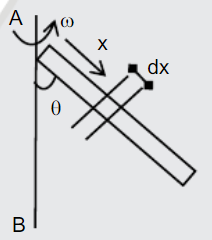A vector has both magnitude and direction. Does it mean that anything that has by the direction of the axis of rotation, and the angle of rotation about the axis. Does that makes any rotation a vector?
Anything that has magnitude and direction need not be called as avector .the quantity must obey the law of addition with other vectors of the same nature .
In general rotation cannot be considered as a vector . An infinitesimally small rotation can be represented by a vector .
Topper's Solved these Questions
- VECTORS SCALARS ELEMENTARY CALCULUS Book:ICSEChapter:VECTORS SCALARS ELEMENTARY CALCULUS Exercise:LONG ANSWER QUESTIONS
Explore 5 Videos
- VECTORS SCALARS ELEMENTARY CALCULUS Book:ICSEChapter:VECTORS SCALARS ELEMENTARY CALCULUS Exercise:SHORT ANSWER QUESTIONS
Explore 44 Videos
- VECTORS SCALARS ELEMENTARY CALCULUS Book:ICSEChapter:VECTORS SCALARS ELEMENTARY CALCULUS Exercise:Applications of integration in Physics
Explore 6 Videos
- UNITSBook:ICSEChapter:UNITSExercise:MODULE 3 (SELECTED PROBLEMS)
Explore 38 Videos
- WAVESBook:ICSEChapter:WAVESExercise:From Musical Sound
Explore 10 Videos
Similar Questions
Mass has both magnitude and direction.
View SolutionA vector has both magnitude and direction. Does that mean anything that has magnitude and direction is necessarily a vector ? The rotation of a body can specified by the direction of the axis of rotation and the angle of rotation about the axis. Does the make any rotation a vector ?
View SolutionOn account of the earth rotating about its axis
View SolutionA quantity has magnitude and direction .can you call it a vector ?
View SolutionIf the earth stops rotating about its axis, then the magnitude of gravity
View SolutionMoment of inertia of a rod which inclined with the axis of rotation with angle thita.
View SolutionA rod is rotating with angular velocity ω about axis AB. Find cosθ.

View SolutionIn which direction does a d-isomer rotate the plane of plane polarised light?
View SolutionWhen the axis of rotation of a body changes does moment of inertia also change ? Why ?
View SolutionIf a vector →r has magnitude 14 and direction ratios 2, 3 and -6. Then, find the direction cosines and components of →r, given that →r makes an acute angle with X-axis.
View Solution